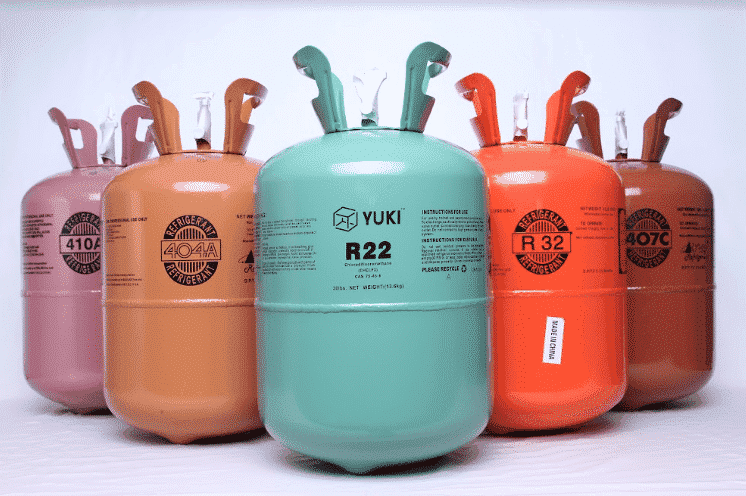Cooling systems, such as refrigerators and air conditioners, employ refrigerant gases. They function by absorbing heat from one location and releasing it in another, resulting in a cooling effect. Boiling point, pressure, flammability, toxicity, and environmental effect are all qualities and characteristics of refrigerant gases. Fluorocarbons, chemical compounds of carbon and fluorine, are among the most prevalent refrigerant gases. CFCs, HCFCs, and HFCs are among them, with differing prefixes depending on the quantity of hydrogen and chlorine atoms in their molecules. R-12, for example, is a CFC containing two chlorine atoms, R-22 is an HCFC containing one chlorine atom, and R-134a is an HFC containing no chlorine atoms.
Because fluorocarbons are stable, efficient, and non-flammable, they have been widely employed as refrigerant gases. They do, however, have certain downsides. CFCs and HCFCs are known to destroy the earth’s ozone layer, which protects it from damaging UV radiation. HFCs have a high global warming potential, which implies they contribute to climate change by trapping heat in the atmosphere.
Fluorocarbons have been subject to international restrictions and agreements because of these environmental concerns, such as the Montreal Protocol and the Kigali Amendment, which aim to gradually phase out their manufacture and consumption. This has resulted in the creation and use of more environmentally friendly refrigerant gases, such as hydrocarbons, hydrofluoroolefins, and natural refrigerants (NRs).
Hydrocarbons are organic carbon-hydrogen molecules such as propane and butane. They have low global warming potential and no ozone depletion potential, making them environmentally friendly solutions. They are, however, highly combustible, and explosive, posing safety concerns during handling and storage.
Hydrofluoroolefins, also known as R-1234yf and R-1234ze, are unsaturated carbon, hydrogen, and fluorine molecules. They have a low global warming potential and no ozone depletion potential, making them excellent HFC substitutes. They are, however, slightly combustible, and more expensive than HFCs.
Natural refrigerants such as ammonia, carbon dioxide, and water are found in nature. They have a low potential for global warming and no ozone depletion, making them the most environmentally beneficial option. They do, however, face several problems, such as high toxicity (ammonia), high pressure (carbon dioxide), and low efficiency (water)
At Gas and Controls we can help you with your refrigerant gas needs, we are one of Ireland’s fastest growing gas detection and environmental monitoring companies – using state of the art gas safety technology and our 30 years’ experience, we provide an unrivalled commissioning and maintenance service of gas safety systems throughout Ireland. We will haver the right product for you, whether that’s a fixed system or a portable has detection device.

